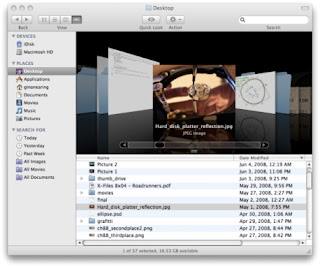Introduction
An
operating system (OS) is the software component of a computer system that is
responsible for the management and coordination of activities and the sharing
of the resources of the computer. The OS acts as a host for application
programs that are run on the machine. As a host, one of the purposes of an OS
is to handle the details of the operation of the hardware. This relieves
application programs from having to manage these details and makes it easier to
write applications. Almost all computers use an OS of some type.
The Big 3
Common contemporary Os's include MicrosoftWindows, Mac Os X, and Linux.
Microsoft Windows has a significant majority of market share in the desktop and notebook computer markets, while the server and embedded device markets are split amongst several Os's.
Linux
Linux (also
known as GNU/Linux) is one of the most prominent examples of free software and
open source development which means that typically all underlying source code
can be freely modified, used, and redistributed by anyone.
The name “Linux”
comes from the Linux kernel, started in 1991 by Linus Torvalds.
The system’s
utilities and libraries usually come from the GNU operating system (which is
why it is also known as GNU/Linux).
Linux is predominantly known for its use in
servers. It is also used as an operating system for a wide variety of computer
hardware, including desktop computers, supercomputers, video game systems, and
embedded devices such as mobile phones and routers.
Windows
Windows
(created by Microsoft) is the most dominant OS on the market today. The two
most popular versions of Windows for the desktop are XP and Vista (Vista being
the latest version). There is also a mobile version of Windows as well as a
server version of Windows (the latest being Windows Server 2008).
Windows is
all proprietary, closed-source which is much different than Linux licenses.
Most of the popular manufacturers make all of their hardware compatible with
Windows which makes Windows operate and almost all kinds of new hardware. Windows has
historically been a tempting target for virus creators because of its world
market dominance. Security holes are often invisible until they are exploited,
making preemptive action difficult. Microsoft has stated that the release of
patches to fix security holes is often what causes the spread of exploits
against those very same holes, as crackers figured out what problems the
patches fixed, and then launch attacks against unpatched systems. It is
recommended to have automatic updates turned on to prevent a system from being
attacked by an unpatched bug.
OS X
OS X is the
major operating system that is created by Apple Inc. Unlike its predecessor
(referred to Classic or OS 9), OS X is a UNIX based operating system. Currently
OS X is in version 10.5, with 10.5.3 being the last major software update and
plans for 10.6 having been announced. Apple has chosen to name each version of
OS X after a large cat with 10.0 being Cheetah, 10.1 as Puma, 10.2 as Jaguar,
10.3 as Panther, 10.4 as Tiger, 10.5 as Leopard, and the unreleased 10.6 named
Snow Leopard.
Apple also
develops a server OS X that is very similar to the normal OS X, but is designed
to work on Apple’s X-Serve hardware. Some of the tools included with the server
OS X are workgroup management and administration software that provide
simplified access to common network services, including a mail transfer agent,
a Samba server, an LDAP server, a domain name server, a graphical interface for
distributed computing (which Apple calls Xgrid Admin), and others.
OS X is a
UNIX based OS built on top of the XNU kernel, with standard Unix facilities
available from the CLI. Apple has layered a number of components over this
base, including their own GUI. The most notable features of their GUI are the
Dock and the Finder.
QUIZ





No comments:
Post a Comment